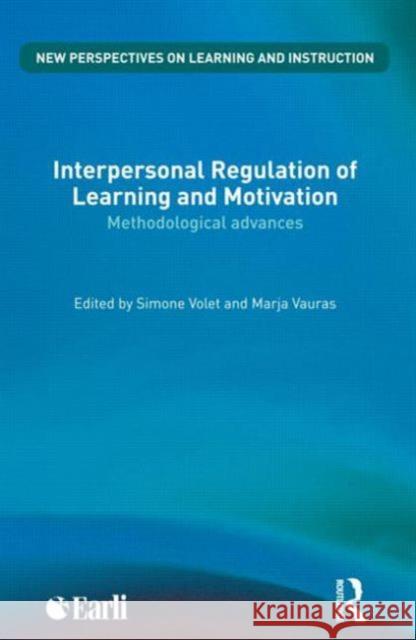Interpersonal Regulation of Learning and Motivation: Methodological Advances » książka
Interpersonal Regulation of Learning and Motivation: Methodological Advances
ISBN-13: 9780415698290 / Angielski / Miękka / 2012 / 226 str.
Interpersonal Regulation of Learning and Motivation: Methodological Advances
ISBN-13: 9780415698290 / Angielski / Miękka / 2012 / 226 str.
(netto: 214,82 VAT: 5%)
Najniższa cena z 30 dni: 216,55 zł
ok. 16-18 dni roboczych.
Darmowa dostawa!
Interpersonal Regulation of Learning and Motivation is the first book in the field to focus on major methodological advances in research on interpersonal regulation of learning and motivation. Interest in developing ways of capturing the dynamics of interpersonal regulation in real-life learning interactions is growing rapidly. Understanding these dynamics is particularly timely given the increased use of collaborative learning activities in schools and university settings, as well as through face-to-face and computer supported collaborative learning (CSCL) environments. While groups and collections of individuals in social interaction are expected to bring their own motivations and goals to the learning situations, it is also assumed that these are further shaped through interaction, as the group activity evolves. Research methodology publications in the field of learning, regulation and motivation are still dominated by a focus on the individual. The study of collaborative learning at both conceptual and methodological level has not incorporated the significance of social regulatory processes of learning and motivation. This is a new development in the field and one covered by this book. The book contains numerous illustrations of innovative: Methodological approaches to study and interpret the dynamics of interpersonal regulation Data sources and data representations to capture scaffolded instruction Theory-based analytic methods to investigate interactions in real-life collaborative learning Coding systems and social software tools for gathering and analysing interactive data. Interpersonal Regulation of Learning and Motivation brings together the work of scholars who have been studying interpersonal regulation of learning and motivation at the boundaries of the individual and the social, and who have made original methodological contributions to the study of interactive learning environments. In combination, their work provides a range of distinctive and original conceptual and methodological contributions to this under-examined and vital field of research, making this an essential read for any researcher or student interested in collaborative learning and motivation.











